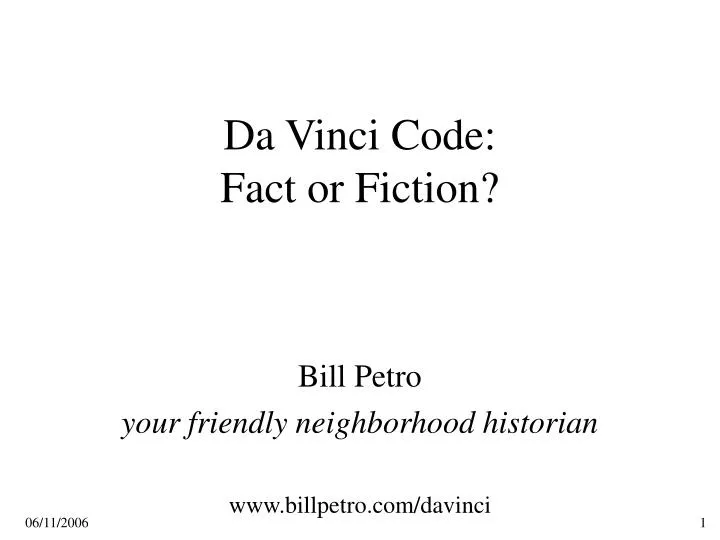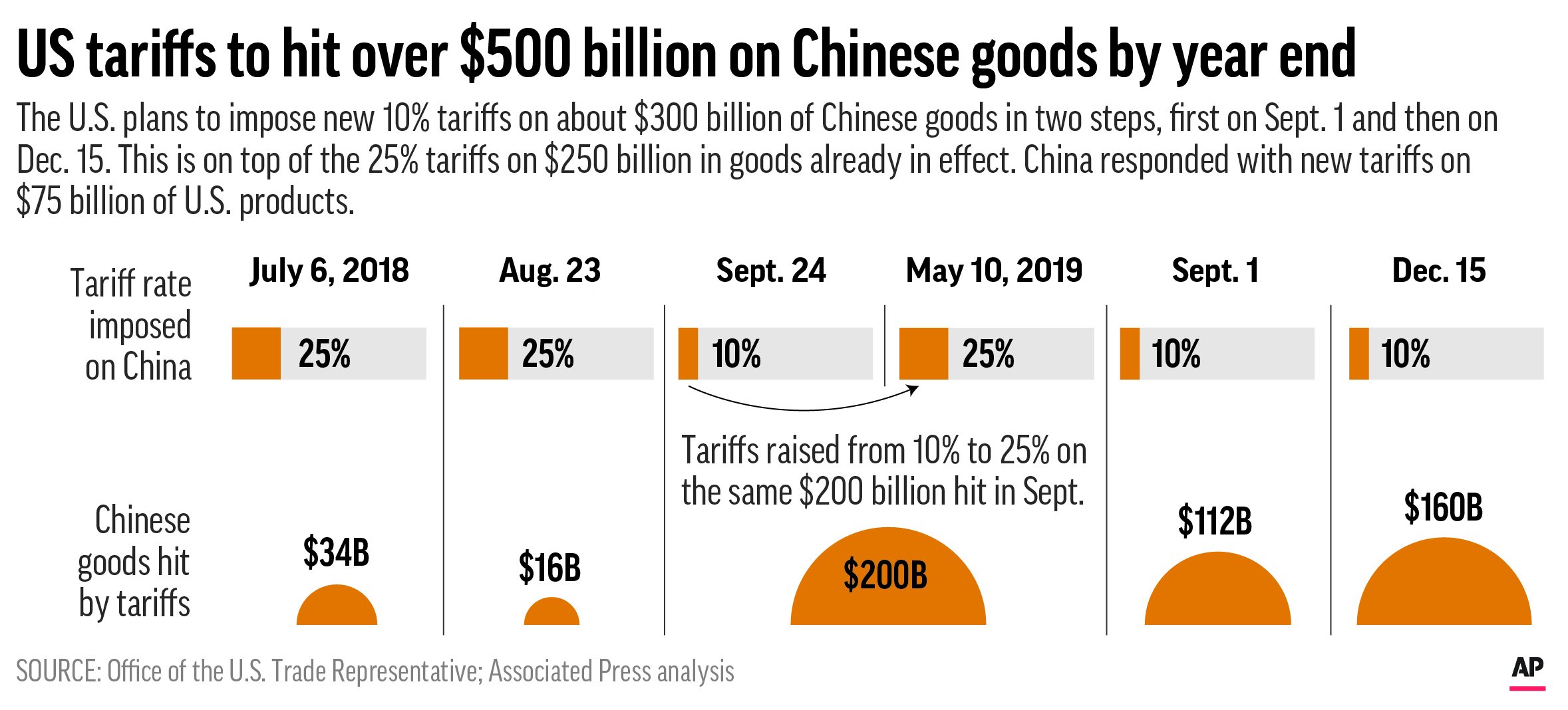The Da Vinci Code: Fact Vs. Fiction In The Historical Mystery

Table of Contents
The Priory of Sion: Myth or Reality?
The Priory of Sion, a central element in The Da Vinci Code, is presented as a powerful, secretive society with a long and influential history, connected to figures like Isaac Newton and Leonardo da Vinci. The novel suggests the Priory guarded secrets about Jesus Christ and the Holy Grail. However, the historical reality is far less dramatic.
-
The Origins of a Legend: The modern-day legend of the Priory of Sion largely stems from the works of Pierre Plantard, a 20th-century French con man. Plantard fabricated documents and genealogies to create a narrative linking the Priory to a mythical lineage and grand historical conspiracies.
-
Lack of Credible Evidence: Despite the novel's portrayal, there's no credible historical evidence supporting the Priory of Sion's claims of influence or secret history. Serious historical research has debunked Plantard's claims, exposing them as elaborate forgeries.
-
The Priory's Role in the Novel: In The Da Vinci Code, the Priory of Sion acts as the guardian of a centuries-old secret, fueling the plot and driving the characters' quest for truth. Its fictional importance contrasts sharply with its lack of historical significance.
-
Scholarly Consensus: The scholarly consensus firmly concludes that the Priory of Sion, as depicted in the novel, is a historical fabrication. Its role in The Da Vinci Code is purely fictional, serving the narrative's dramatic purposes.
The Holy Grail: Beyond the Legends
The Da Vinci Code presents a radical reinterpretation of the Holy Grail, shifting it from a sacred chalice to the bloodline of Jesus Christ through Mary Magdalene. This deviates significantly from the Grail's traditional interpretations.
-
Symbolic Meanings: Throughout history, the Holy Grail has held various symbolic meanings, often associated with spiritual purity, divine grace, or the ultimate quest for enlightenment. These interpretations vary across religious and cultural contexts.
-
Historical and Theological Perspectives: Theological perspectives on the Grail are diverse, with interpretations ranging from a literal chalice used at the Last Supper to a symbolic representation of spiritual fulfillment. Historically, the Grail's significance has been intertwined with Arthurian legends and mystical traditions.
-
The Da Vinci Code's Departure: The Da Vinci Code departs drastically from these traditional views, reinterpreting the Grail as Mary Magdalene and her descendants, a notion unsupported by historical or theological evidence.
-
The Search for the Grail: Numerous historical and archaeological searches for the Holy Grail have yielded no conclusive evidence supporting the novel's interpretation.
Mary Magdalene: Reinterpreting History
The Da Vinci Code portrays Mary Magdalene as Christ's wife and the ancestor of a royal bloodline, a significant departure from traditional religious interpretations and historical accounts.
-
Mary Magdalene's Historical Role: Historical evidence regarding Mary Magdalene’s role in the early Christian church is limited but suggests she was a devout follower of Jesus, possibly a prominent figure among his disciples.
-
Traditional Interpretations vs. The Novel: Traditional interpretations often portray Mary Magdalene as a repentant sinner or a devoted follower, not as Christ's wife and the mother of his child. The Da Vinci Code radically reimagines her role, impacting her public perception.
-
Impact of The Da Vinci Code: Dan Brown's novel significantly influenced the public perception of Mary Magdalene, sparking renewed interest and debate surrounding her historical role and significance within Christianity.
-
Academic Debate: The academic community largely rejects the novel's portrayal of Mary Magdalene as historically inaccurate. The lack of credible evidence to support such claims is a primary concern among historians and theologians.
The Lineage of Jesus: Fact or Fiction?
The claim that Jesus had a bloodline continuing through Mary Magdalene is a central and highly controversial element of The Da Vinci Code.
-
Lack of Evidence: There is no historical or genealogical evidence to support the existence of a direct bloodline of Jesus. Such claims are unsupported by primary sources and credible historical scholarship.
-
Narrative Function: This fictional element is crucial to the novel's plot, providing a driving force behind the narrative and adding to the mystery surrounding Jesus and his legacy.
-
Theological and Historical Implications: The implication of a hidden lineage for Jesus contradicts traditional Christian theology and significantly alters historical interpretations of Jesus's life and ministry.
Conclusion
The Da Vinci Code, while a captivating work of fiction, takes significant liberties with historical facts. The novel uses real historical figures and events as a springboard for its thrilling narrative but often twists or completely reimagines them. The Priory of Sion, the Holy Grail, and the portrayal of Mary Magdalene are all prime examples of this creative license, prompting a fascinating discussion about historical accuracy in popular culture. Understanding the difference between the fictional narrative and actual historical evidence is crucial to appreciating both the novel and the real history it attempts to reinterpret.
Call to Action: Want to delve deeper into the historical mysteries surrounding The Da Vinci Code? Explore credible historical resources and academic works to separate fact from fiction and form your own informed opinions on the historical events and figures explored in Dan Brown's thrilling novel. Continue your exploration of The Da Vinci Code and its historical context. Learn to critically assess information and unravel the mysteries for yourself.

Featured Posts
-
 Data Sovereignty And Cultural Survival The Challenges Faced By Indigenous Scientists
May 13, 2025
Data Sovereignty And Cultural Survival The Challenges Faced By Indigenous Scientists
May 13, 2025 -
 Abi Research On Tech Tariffs Unpacking The High Stakes Impact Of The Trump Trade War
May 13, 2025
Abi Research On Tech Tariffs Unpacking The High Stakes Impact Of The Trump Trade War
May 13, 2025 -
 Britain And Australias Response To The Myanmar Crisis A Case Study In Selective Justice
May 13, 2025
Britain And Australias Response To The Myanmar Crisis A Case Study In Selective Justice
May 13, 2025 -
 Didcot Dog Walk Supports Mental Health Awareness Week
May 13, 2025
Didcot Dog Walk Supports Mental Health Awareness Week
May 13, 2025 -
 The Da Vinci Code Fact Vs Fiction In The Historical Mystery
May 13, 2025
The Da Vinci Code Fact Vs Fiction In The Historical Mystery
May 13, 2025
